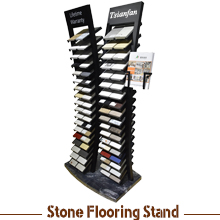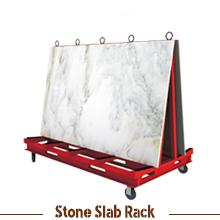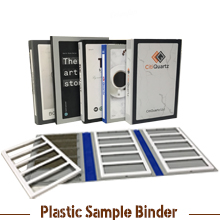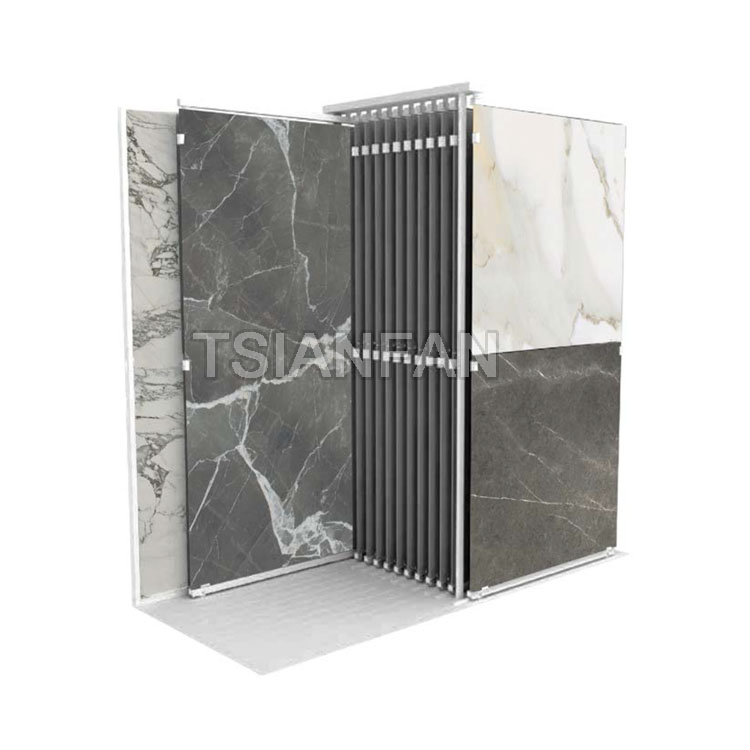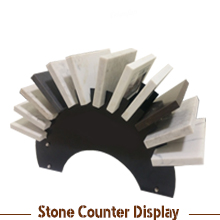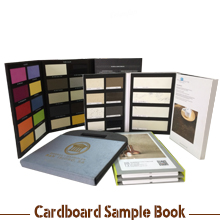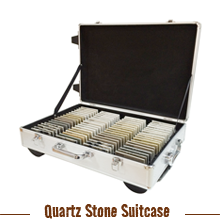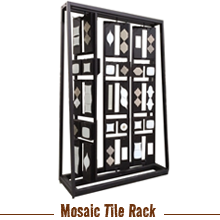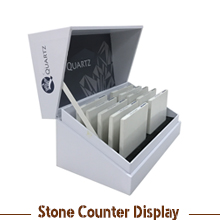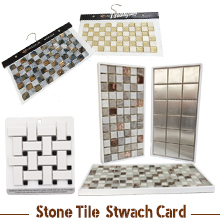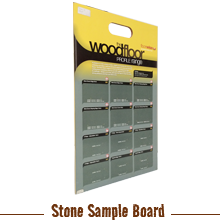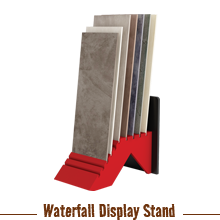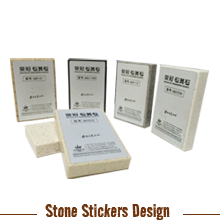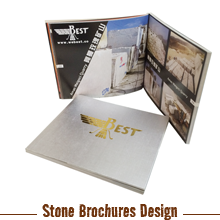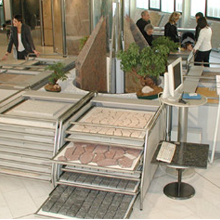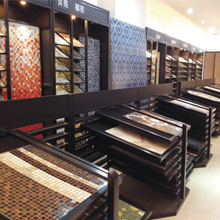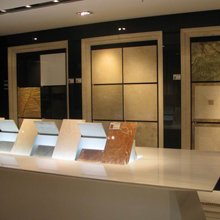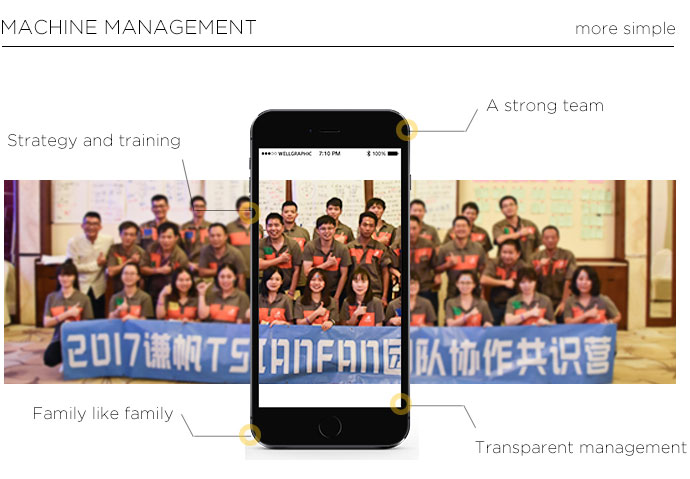Do you want to customize the pattern of artificial quartz stone display board?
Time: 2024-06-05 11:27:06 Source: Quartz Stone Display
Customizing the pattern of an artificial quartz stone display board can enhance its appeal and effectiveness in showcasing your products. Here’s a guide on how to customize these display boards:### 1. **Understand Your Needs**
#### Purpose:
- **Showcase Variety**: Determine whether you want to display a single pattern or a variety of patterns on one board.
- **Highlight Features**: Decide if you want to highlight specific features such as color variations, veining, or texture.
#### Audience:
- **Target Market**: Consider your target audience (e.g., interior designers, homeowners, contractors) and tailor the design to their preferences.
- **Brand Identity**: Ensure the customization aligns with your brand’s identity and marketing strategy.
### 2. **Design Elements**
#### Layout:
- **Grid Layout**: A grid layout can display multiple small samples of different patterns, making it easy for customers to compare options.
- **Single Large Sample**: A large single sample can show the details of a specific pattern more clearly.
#### Visual Design:
- **Color Scheme**: Use a color scheme that complements the quartz patterns and your branding.
- **Labels and Information**: Include clear labels and information about each pattern, such as the name, features, and applications.
#### Branding:
- **Logo and Branding**: Incorporate your logo and branding elements like colors and fonts to reinforce brand recognition.
- **Professional Graphics**: Use high-quality graphics and images to ensure a professional look.
### 3. **Material and Construction**
#### Material Choice:
- **Durable Material**: Choose durable materials for the display board, such as high-quality acrylic, MDF, or metal, to withstand frequent handling.
- **Finish**: Consider a glossy or matte finish based on the look you want to achieve and the durability required.
#### Size and Shape:
- **Portability**: Ensure the size is manageable for easy transportation if the board will be used in various locations.
- **Custom Shapes**: Custom shapes can make your display stand out, but ensure they are practical for showcasing the samples.
### 4. **Manufacturing Process**
#### Prototyping:
- **Mock-Ups**: Create digital mock-ups of your design to visualize the final product and make any necessary adjustments.
- **Sample Production**: Produce a sample display board to test the design and functionality before full-scale production.
#### Printing Techniques:
- **High-Resolution Printing**: Use high-resolution printing for clear and vivid patterns.
- **UV Printing**: Consider UV printing for durability and resistance to fading.
#### Assembly:
- **Secure Mounting**: Ensure samples are securely mounted on the board to prevent them from falling off during transport or handling.
- **Easy Replacement**: Design the board so that samples can be easily replaced or updated.
### 5. **Cost Considerations**
#### Budget:
- **Set a Budget**: Determine your budget for the custom display boards and find a balance between cost and quality.
- **Cost-Effective Solutions**: Consider cost-effective materials and manufacturing processes that do not compromise on quality.
#### Bulk Orders:
- **Bulk Discounts**: Ordering in bulk can reduce the cost per unit. Negotiate with suppliers for the best rates.
- **Supplier Selection**: Choose a reputable supplier who can deliver quality products on time and within budget.
### 6. **Supplier and Manufacturer Selection**
#### Research:
- **Supplier Reputation**: Research suppliers and manufacturers with experience in producing high-quality display boards.
- **Portfolio and Reviews**: Check their portfolio and customer reviews to ensure they can meet your customization requirements.
#### Collaboration:
- **Design Collaboration**: Work closely with the supplier to ensure they understand your design specifications and branding requirements.
- **Quality Control**: Establish quality control measures to ensure the final product meets your standards.
### 7. **Implementation and Usage**
#### Placement:
- **Strategic Placement**: Place the display boards in high-traffic areas of your showroom or exhibition to maximize visibility.
- **Lighting**: Use proper lighting to highlight the quartz patterns and enhance their visual appeal.
#### Marketing Integration:
- **Promotional Material**: Use the display boards in conjunction with brochures, catalogs, and digital marketing efforts to provide comprehensive information to customers.
- **Sales Tools**: Equip your sales team with portable versions of the display boards for on-site presentations and client meetings.
### Example Process:
1. **Concept Development**: Define the purpose, audience, and key features to be highlighted.
2. **Design Creation**: Create detailed designs and mock-ups incorporating branding and layout preferences.
3. **Material Selection**: Choose durable materials and finishes.
4. **Prototype Production**: Develop a prototype to test the design and make adjustments.
5. **Full Production**: Manufacture the customized display boards based on the approved prototype.
6. **Implementation**: Strategically place the boards and integrate them into your marketing strategy.
By following these steps, you can create customized artificial quartz stone display boards that effectively showcase your products and enhance your brand’s visibility and appeal.
�ؼ���:Artificial quartz stone display board
�������:
Do you want to customize the pattern of artificial quartz stone display board?




